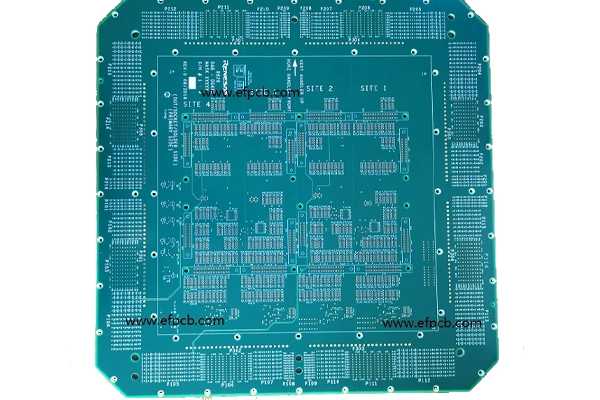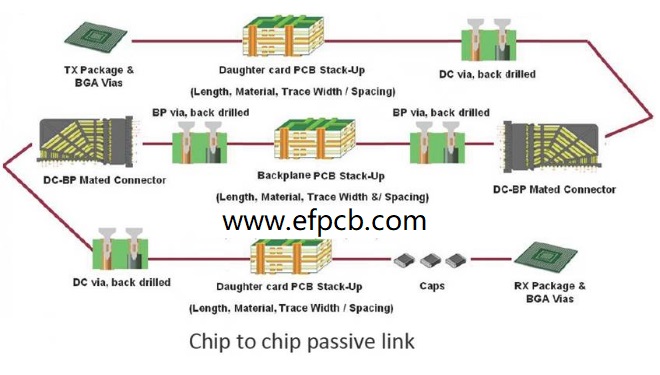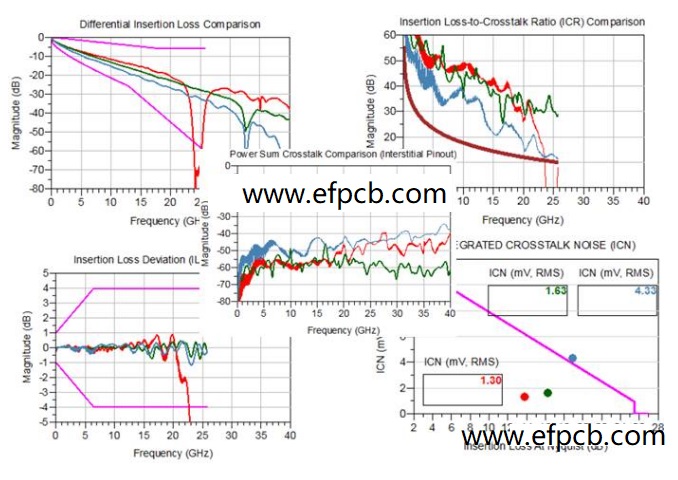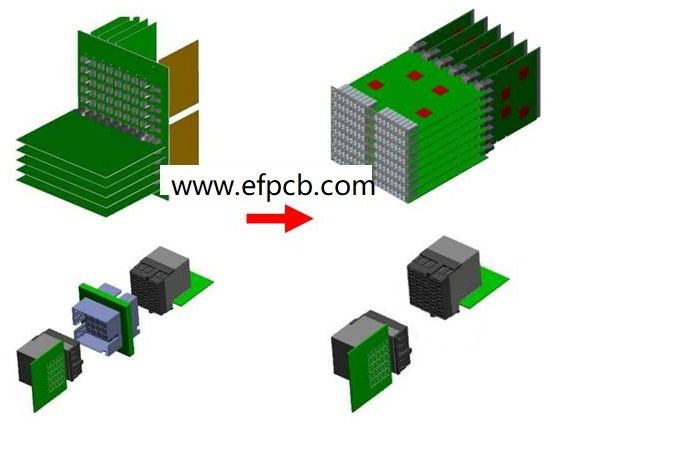-
Mail Us Todaysales@efpcb.com
-
Company LocationShenzhen, Guangdong, China
-
+86-755-23724206Call us for more details



Part No.: E1615060170A
Layer count: 16 layer
Material: FR4, 4.8mm, 1 OZ for all layer
Minimum track: 6 mil
Minimum space(gap): 5 mil
Minimum hole: 0.50mm
Surface finished: whole board hard gold, Au > 40 microinches
Panel size: 598*578mm/1up
Backplane itself is a kind of special PCB, which mainly provides interconnection channels for various types of sub cards in the system, including signal, power supply, management interface, etc. The structure also plays a supporting role for the sub card.
The difference between high-speed backplane and ordinary backplane is that the signal interconnection rate on high-speed backplane is high, and the PCB materials and backplane connectors used are high-speed related. The figure below shows the traditional high-speed backplane interconnection system, which is mainly composed of backplane, sub card and connector.
1. Laminated structure and routing of sub card and backplane
2. Backplane connector performance
3. AC capacitance and via
4. Chip packaging

At present, IEEE and OIF are the standard definitions of backplane interconnection structure, which we introduced in the previous article. The standard for backplane application in IEEE is Kr, such as 40gbase-kr4. The standard of backplane application in OIF is LR, such as cei-25g-lr. Both of these specifications have more detailed frequency domain reference index requirements for backplane interconnection system.

In addition to the traditional backplane system, there is also an orthogonal backplane system structure. In the orthogonal backplane structure, the service cards and switching cards on both sides are directly inserted into the backplane at a vertical angle. The backplane can connect multiple service cards and switching cards only through orthogonal connectors. The routing connection of the middle backplane is omitted, which can make the total routing length shorter and the attenuation smaller.
However, due to the vertical angle of the boards on both sides in the orthogonal backplane system, the air duct is not easy to design, so the biggest problem is the poor ventilation and heat dissipation of the whole machine. In addition, the via length on the backplane is generally long, and the impedance discontinuity is severe, resulting in high-speed performance crossover.
In order to solve the above problems, the industry has proposed the direct orthogonal architecture technology, that is, there is no central backplane, and the business card and exchange card are directly connected through the connector, so that the heat dissipation effect is better. At the same time, there is no longer backplane through hole, which improves the performance of signal integrity.

Both IEEE and OIF only define the electrical performance of backplane interconnection applications, and do not define specific backplane architecture standards, such as standard backplane connectors, backplane size, system management, etc.
ATCA is one of the standards with the definition of high-speed backplane architecture. ATCA (Advanced Telecom Computing Architecture) is formulated by PICMG and mainly aims at telecom operation level applications. ATCA consists of a series of specifications, including the core specifications that define the structure, power supply, heat dissipation, interconnection and system management.
In terms of backplane structure, ATCA supports a variety of topologies such as the whole network and double star. In terms of backplane transmission protocol, it also supports Ethernet, PCIe and sRIO. The latest version supports 100gbase-kr4 applications, that is, the maximum rate of a single channel is 25gbps.
ATCA also defines special standard backplane connectors adfplus and ADF + +, which correspond to 10g and 25g rate applications respectively.
ATCA supports multiple protocols on backplane transmission, and electrical standards can also refer to the corresponding protocol requirements. For the transmission of backplane applications such as 10GBASE Kr / 100gbase kr4 of Ethernet, the ATCA standard defines strict test standards and processes, including the specification requirements of a variety of test fixtures.